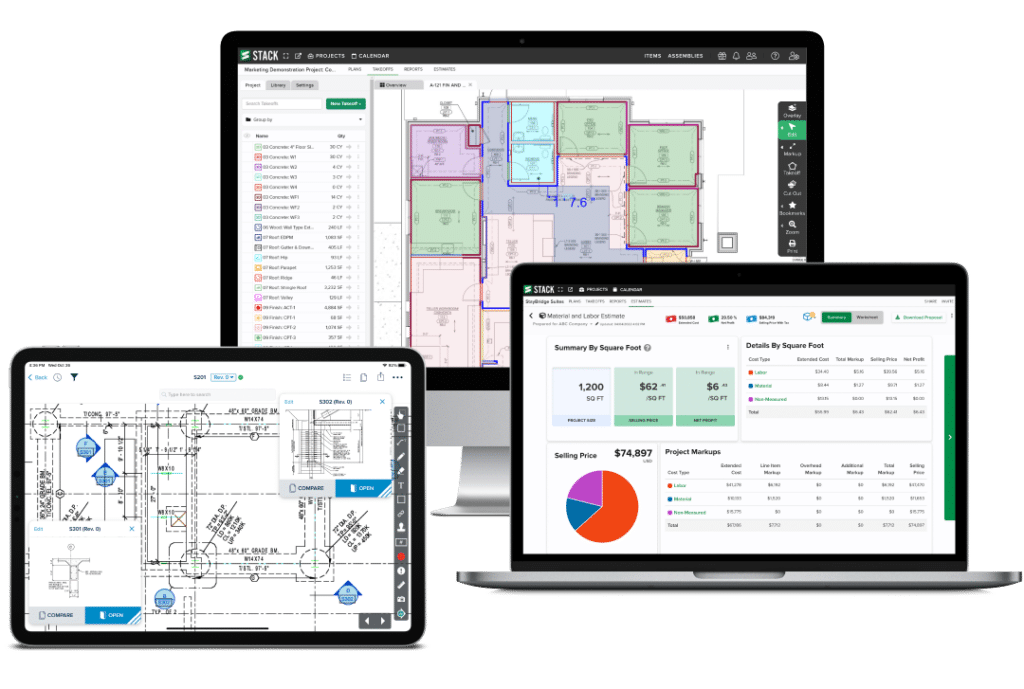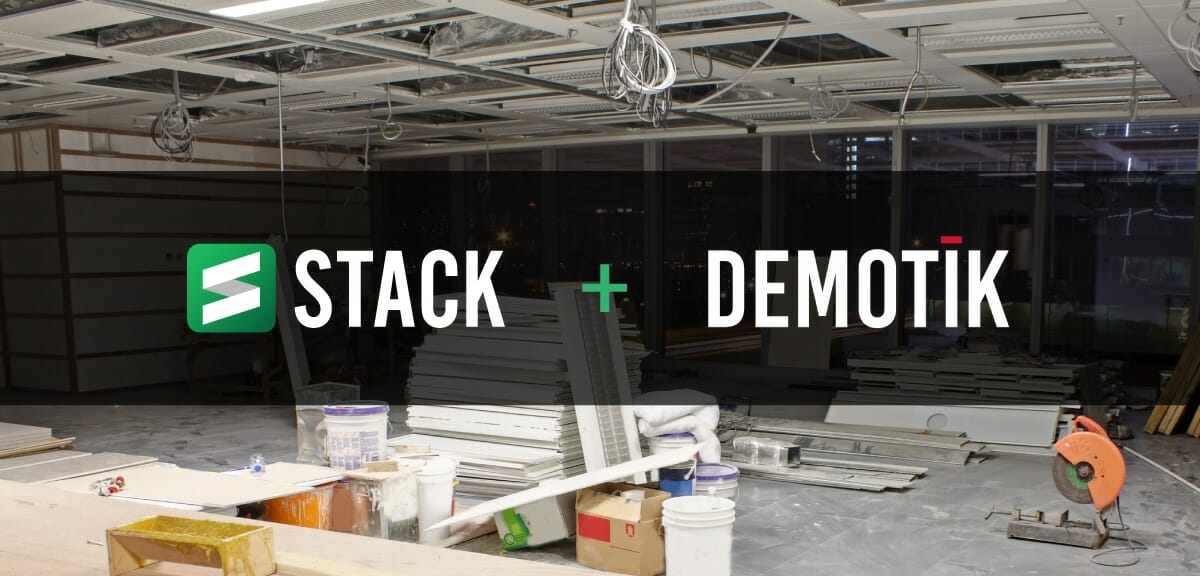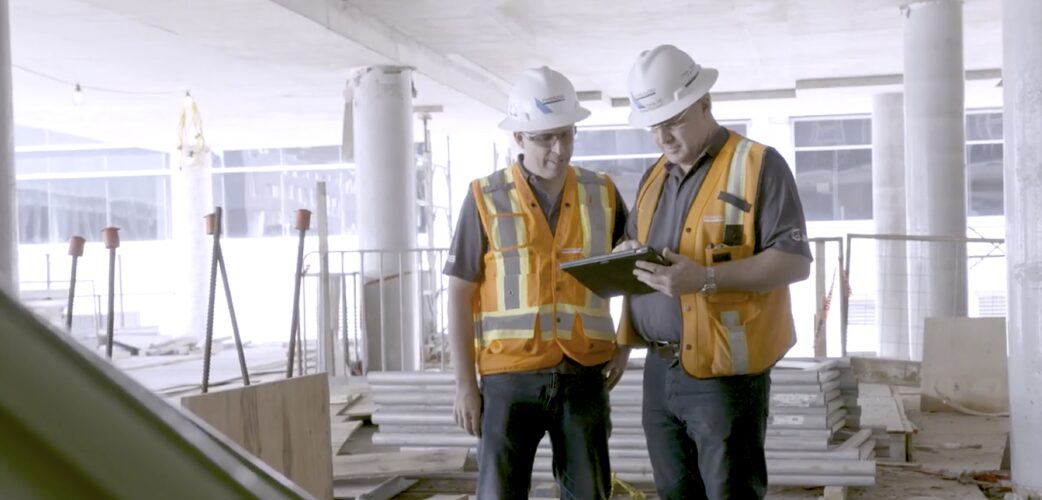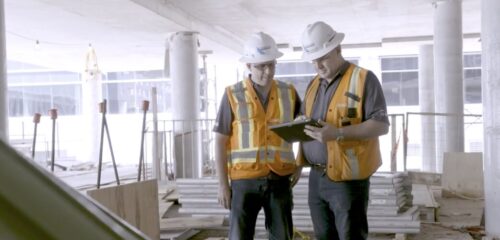Looking for a construction bid template for commercial jobs?
There are many customizable construction bid templates available on the internet. The bid templates that you’ll find may be sufficient for simple quotes for residential work where you don’t have access to digital blueprints, however, using a free construction bid template is usually not the best way to create a bid for a commercial job.
The construction industry is competitive… contractors are competing against each other for the same jobs. Providing a thorough and accurate bid is key to helping you win the job. In addition, because you won’t win every job that you bid on, it’s important to keep submitting bids so that you can maintain a full work schedule.
For commercial work, the bidding process often begins with receiving an invitation-to-bid from a general contractor along with a set of digital blueprints for you to review. You’ll need to measure your plans and perform a takeoff using software or by hand to determine the material quantities needed for the job. From there, you can create a cost estimate accounting for all the material costs, labor, taxes, overhead, profit margin, etc. The final step is submitting your completed detailed bid to the general contractor.
Bid Faster. Win More. Build Smarter.
Get your FREE account today to:
- Increase Team Efficiency
- Complete Estimates Faster
- Generate More Revenue

What details should I include in my large and small construction bids?
• Exact details of the work to be fulfilled. The more specific you can be, the better!
• Complete list of the materials including model and specification numbers, colors, etc where applicable.
• Plans for removing trash or debris from the site.
• Any other details you want to make sure the general contractor is aware of.
What if there was an easier, more accurate, less time-consuming way to create your bids?
Creating construction bids doesn’t have to be a hassle anymore! Today, using customizable takeoff & estimating software is a crucial part of the construction process. Software such as STACK allows you to easily create takeoffs, estimates and utilize measurement and mark-up tools. Takeoffs can be performed 3-4 times faster than measuring by hand.
If you’re still performing takeoffs manually, you’re taking on a lot more risk. Costly mistakes can occur when measuring wrong, making incorrect calculations, or double-counting. STACK offers free, plus, pro, and enterprise software options to meet your companies specific needs.
What trades does STACK work for?
• General Contractor – Whether you’re in the office, on the road, or at the job site, you can view plans, add markups, and run reports, and collaborate with your team.
• Concrete – Compatible with all types of concrete projects like footings, walls, foundations, pure columns, and more.
• Home Builders – Measure or verify takeoff quantities and add-in material, labor, and equipment costs to ensure estimates fall within the desired project scope and budget.
• Drywall – Quickly and accurately calculate materials such as gallons of paint, sheets of drywall, square feet of tile, carpet, flooring, and ceiling tiles.
• Landscaping – Determine quantities of seed, sod, tiles, and more to accurately measure area dimensions.
• Masonry – Calculate the correct quantities of block, brick, CMU, rebar, mortar, and other materials needed through powerful masonry bidding software.
• Mechanical – We offer various pre-built items and assemblies but you also have the option of customizing your database to determine quantities.
• Roofing – Fast and accurate roofing estimates are available with industry-leading, in-screen plan markup, and measurement tools.
• Structural Steel – Calculate linear feet, weight, and more by using standard or custom beam takeoffs.
• Painting – We offer an extensive library of prebuilt options to use to your advantage.
• Suppliers – Suppliers can let their clients & customers do takeoffs themselves.
How can bid templates benefit my business?
Bid proposals for construction companies are necessary for large projects. Creating a construction bid form allows for a practical business proposal that can reduce stress and increase harmonious workflow. You can improve efficiency by having your team and customers use the same collaborative platform. Our customer success team and library of help resources will assist you with any questions you may have using STACK software.
How do I use free construction templates?
Once you’ve chosen a template option, coming up with a basic estimate through a method called unit costing is an important next step. However, before you begin this process, look out for possible pitfalls like not reading all relevant project documents, or failing to input an expense. Make sure to check and recheck your work to ensure you’ve included all the costs. Start by compiling all the line items (assemblies) for that job. Then attach a unit cost to each line item. Add your numbers and have them checked by a second party that is knowledgeable in this area. The last step is applying your standard markup to get a final price.
The 5 steps in bidding a commercial construction job
1. Find a project that you want to bid on. You can find projects by searching an online planroom or you may have received an invitation-to-bid (ITB) from a general contractor.
2. Import your project into construction estimating software. Once you have a set of digital blueprints, you’re ready to get started! There are many available software options to choose from but STACK is a great choice because you can create a free account with no obligation. You can try it out the free version before deciding if an upgraded account type if needed.
3. Measure your plans using software & determine the material quantities needed for the job. Good software will be able to help you easily determine how much materials you’ll need for the job. Measuring your plans using software is much faster and more accurate that measuring plans by hand.
4. Add in other costs, profit margin, tax, etc. As you complete your estimate, add in your material costs and multiply those by your material quantities to get your total cost of materials. In addition, be sure to add in other costs such as labor, travel, profit margin, tax, overhead, etc.
5. Submit your bid. If you are accustomed to measuring plans by hand, using a digitizer, or outdated desktop software, you’ll notice how much faster it was to create your bid. Once it’s done, submit it to the general contractor. Be sure to follow up to check on the status of your bid and reach out personally to demonstrate that you’re interested in the job.
Want to learn more about STACK?
Create a free account or schedule a demo today.








